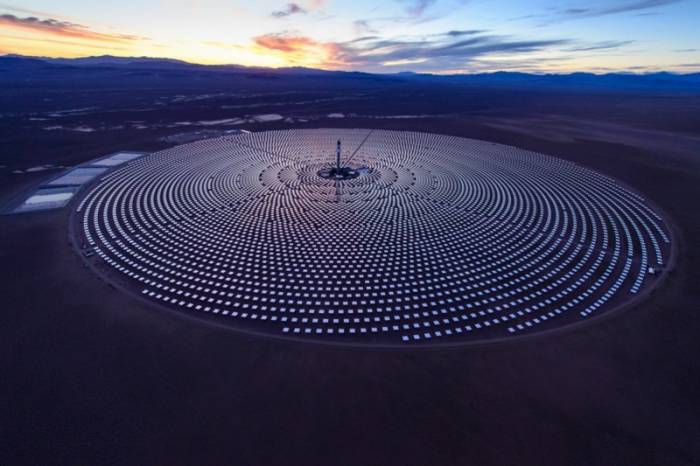
Morocco – future solar energy giant?
2 minutes of reading
A few kilometres from Ouarzazate, in the heart of Morocco, is one of the world’s five largest solar farms.

Completed in 2016, the Noor solar plant, divided into three sites (Noor I, Noor II and Noor III) across 3,000 hectares, can deliver solar electricity not just during the day but also for several hours after sunset, thanks to its innovate storage technique.
Parabolic mirror panels focus the sun’s energy onto heat transfer tubes, then into large reservoirs of molten salt heated to 390°C (up to 560 °C on Noor III). Once transformed into thermal energy, it is then used to spin turbines in order to continue generating power, independently of the sunlight. This is enough to produce an almost continuous supply of electricity for over one million Moroccans, particularly during peak times in the hours after sundown.
The Kingdom plans to build another four solar plants, in order to meet its production target of 2 GW of electricity by the year 2020. The investment needed to reach this target is estimated at almost 8 billion euros, with most of the country’s energy needs currently depending on imported fuels (95%).
In 2016, power generation from photovoltaic solar plants amounted to 1.5% of the world’s power generation. China remains the world’s largest producer of photovoltaic solar electricity, followed by Japan and the United States. The sector is growing fast in the African continent, where power generation is a major challenge: around 600 million people are still without electricity.
Ideally located on the Atlantic coast, in an area with very high levels of sunshine, Morocco is well placed to become a future giant in wind and solar energy, and a major player in renewable energy in Africa. Its power grid is already interconnected with those in Algeria and Mauritania. Next stop, Europe?
More reading
Read also




What lies ahead? 7 megatrends and their influence on construction, real estate and urban development
Article
20 minutes of reading

